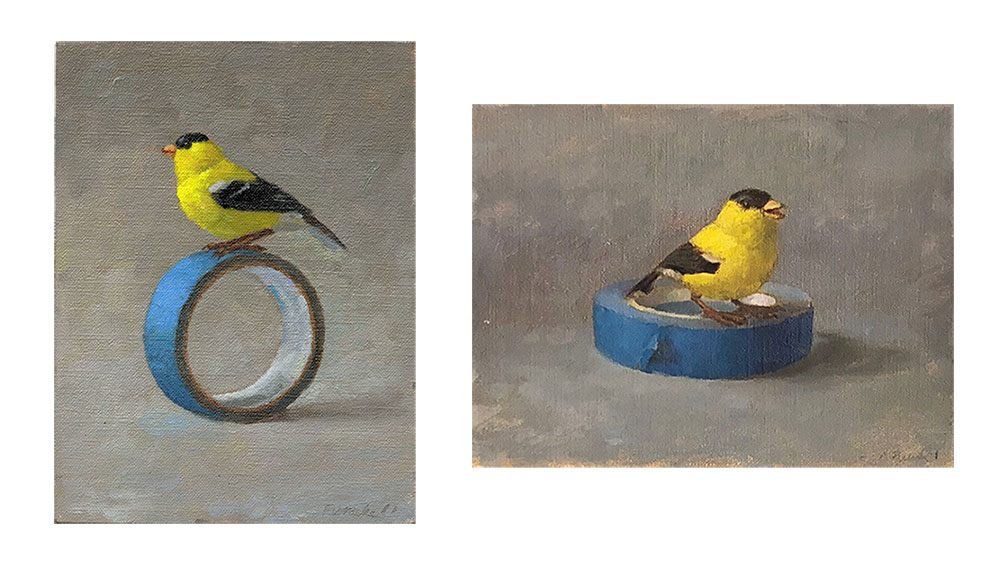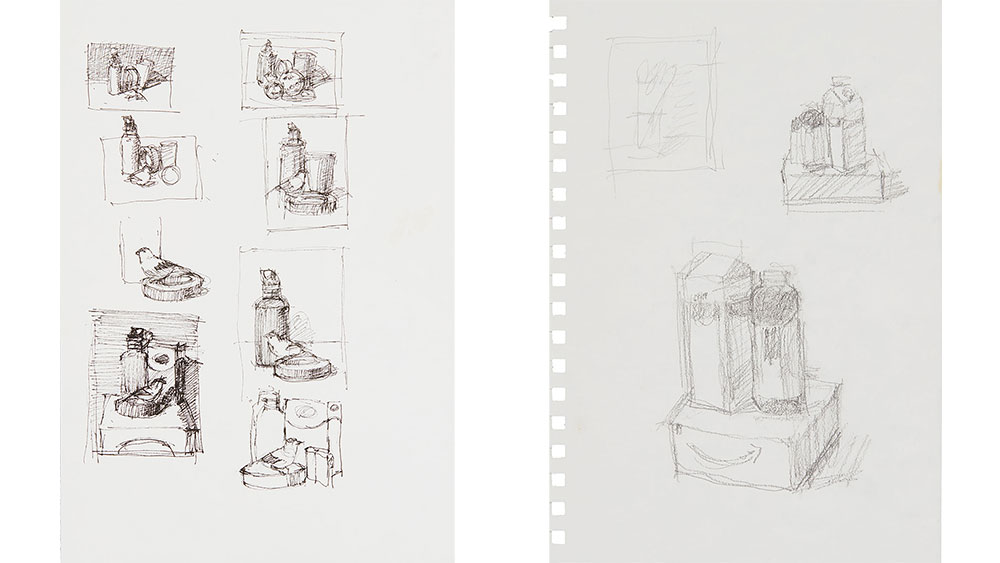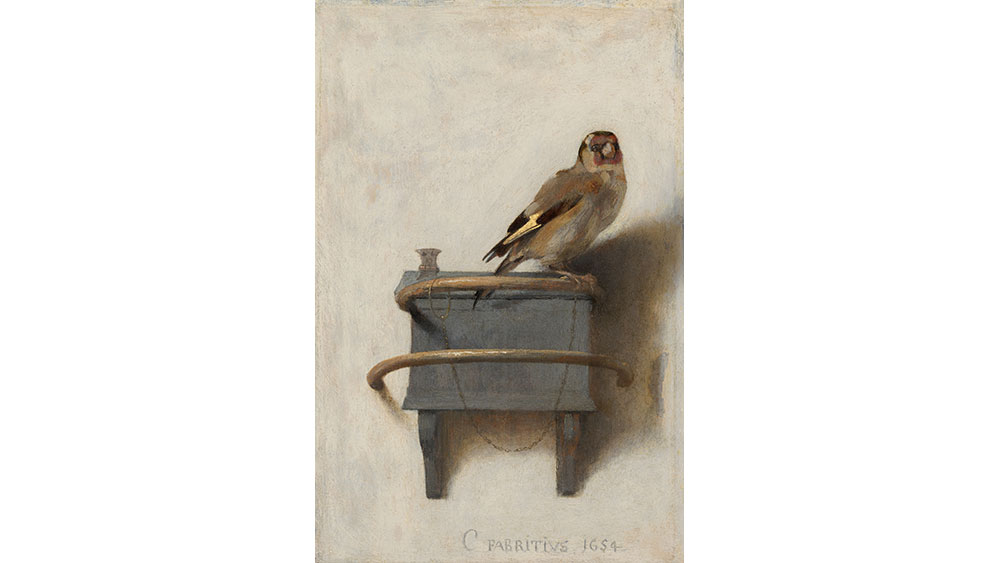In her small, vibrant paintings, April Glory Funcke explores what she has called the “fictive space” of painting. Although she works figuratively, Funcke acknowledges that all paintings are abstract in that they are constructed by a series of decisions an artist makes. As she says in her artist statement, “Direct observation is always fooled by memory and association, becoming an exercise in questioning what one is seeing.” Coming from a commercial illustrator background like her mentor Wayne Thiebaud, Funcke uses elements of caricature — the slight exaggeration of details — to take commonplace objects and turn them into something out of the ordinary. As she describes it, her work is small in size, but large in scale.

Funcke’s paintings, which range from carefully composed still lifes to cartoon characters, begin with a consideration of the relationships of objects and their component parts. As she puts it, “Objects speak to me in the poetry of form: shape, color, value, rhythm and texture.” Her two paintings of goldfinches, Goldfinch & Tape and Singing Goldfinch, each contain a yellow goldfinch atop a roll of blue painter's tape against a soft gray background. In the former, the tape becomes the focal point of the painting, as Funcke emphasizes its circular shape; the painting, in fact, becomes a study of the circle. In the latter, by dropping the tape on its side to rest on the ground, the tape functions more as a stage for the singing bird. These experiments in composition can be seen even more clearly in her sketches, where objects repeat in various combinations.

April Glory Funcke, Untitled sketches, 2018. Pen on paper. Courtesy of the artist. © April Glory Funcke.

April Glory Funcke, C&H (Amazon), 2016. Oil on panel, 10 x 8 in. (25.4 x 20.3 cm).
Courtesy of the artist. © April Glory Funcke.
The bird and tape reappear in C&H (Amazon), where they have been joined by a group of everyday objects gathered together in a triangular composition that echoes Italian Renaissance painting. Rather than including holy figures, however, Funcke has used elements of everyday life: a water bottle, an Amazon delivery box, a box of sugar — elevating them from ordinary objects to an almost altar-like status. As she says, “Through quiet contemplation of the ordinary I find geometries that align to form secret meanings.”

Carel Fabritius, The Goldfinch, 1654. Oil on panel, 33.5 cm (13.1 in) x 22.8 cm (8.9 in), Mauritshuis, The Hague, The Netherlands.
Funcke, like Thiebaud himself and many of the artists in this exhibition, is a student of art history, and looks to still life painting, particularly that of the 17th century Dutch masters. Returning to the goldfinches, one can see a clear link to perhaps the most famous goldfinch in art history, Carel Fabritius’ The Goldfinch of 1654. From soft brownish-taupe backgrounds that emphasize softly fluffed feathers to the rounded forms that support the birds, Funcke has modernized Fabritius’ songbird, and much like C&H (Amazon), turns the vernacular of everyday life to something remarkable.
Susie Kantor, Associate Curator





